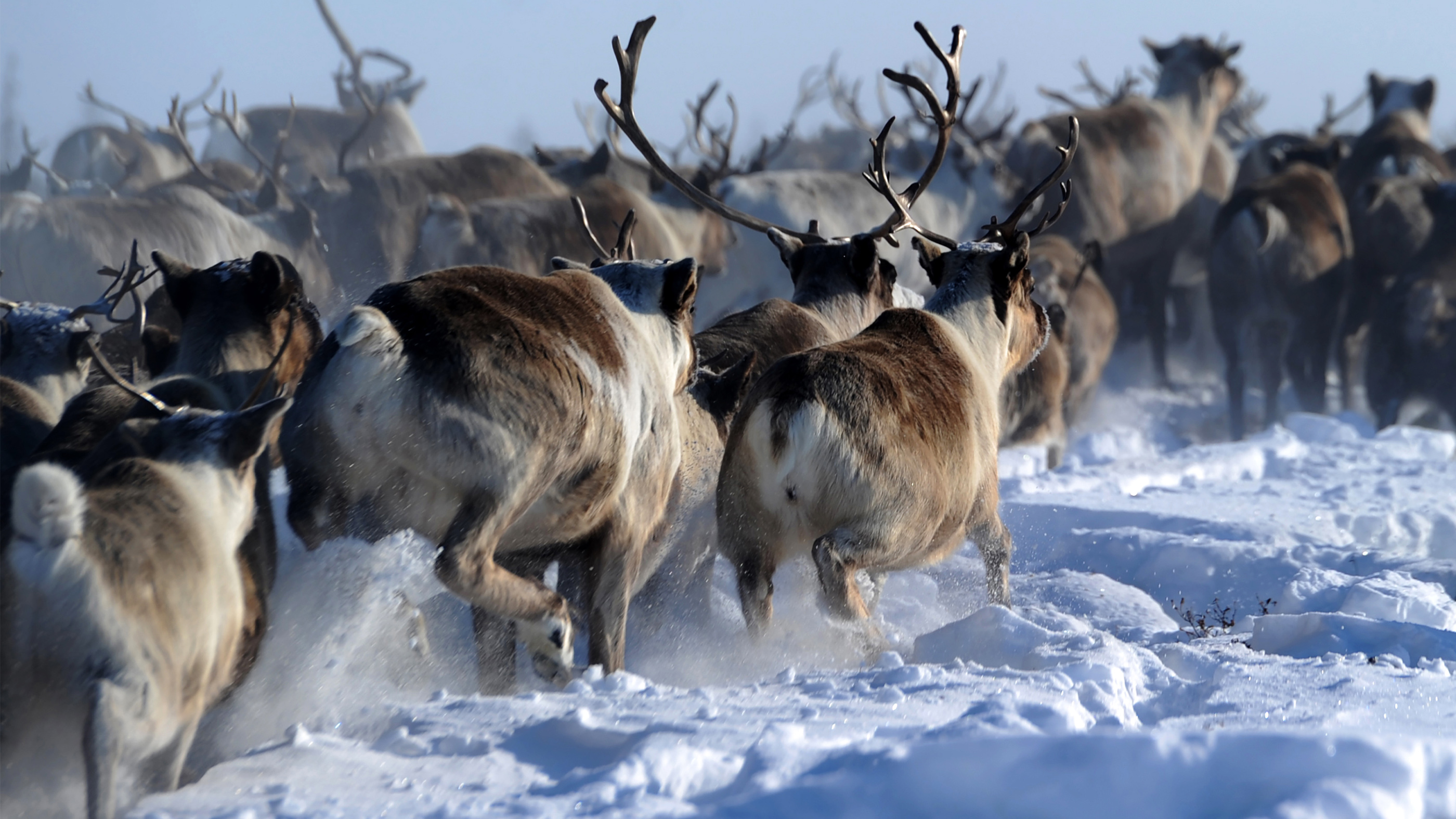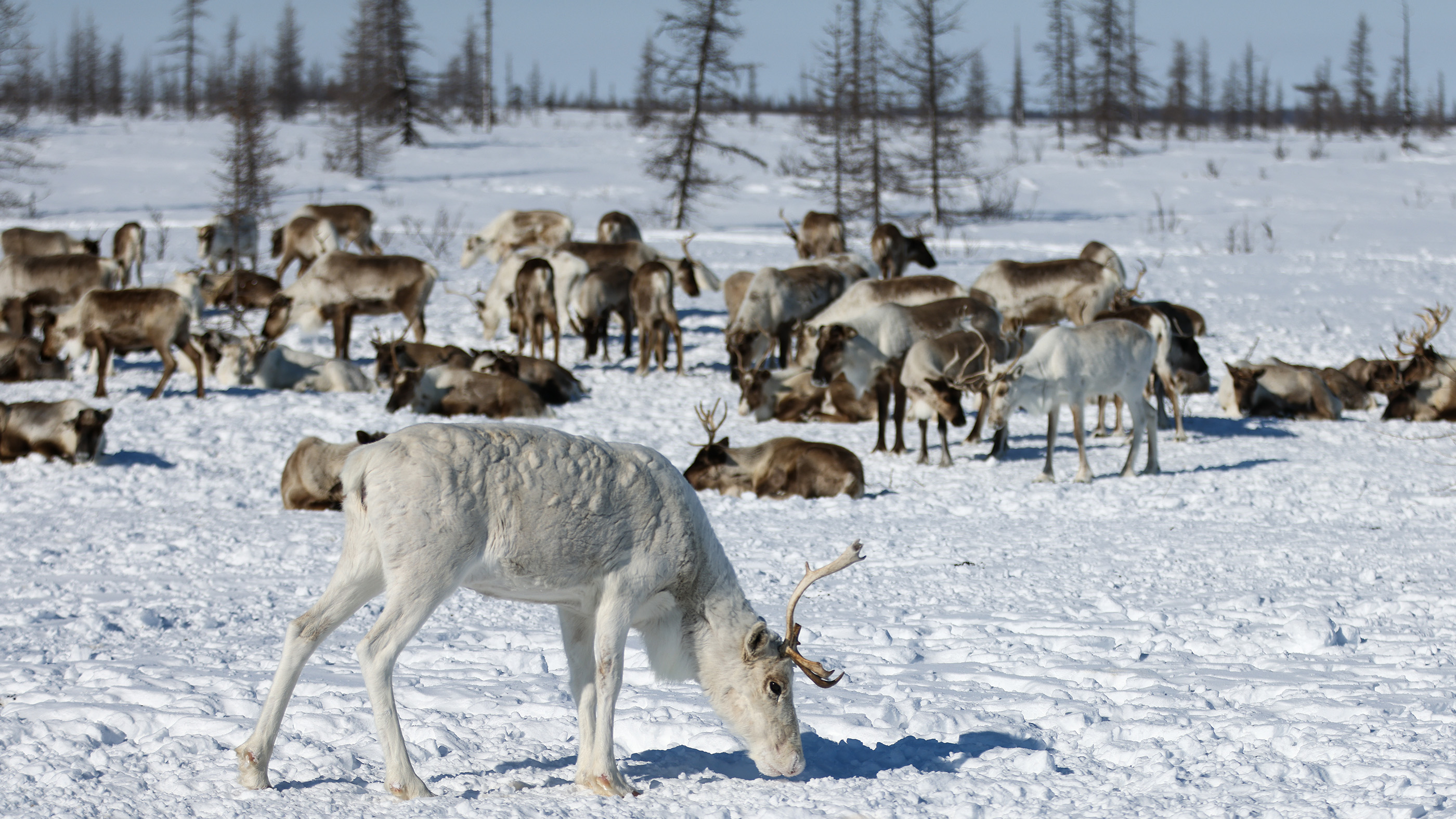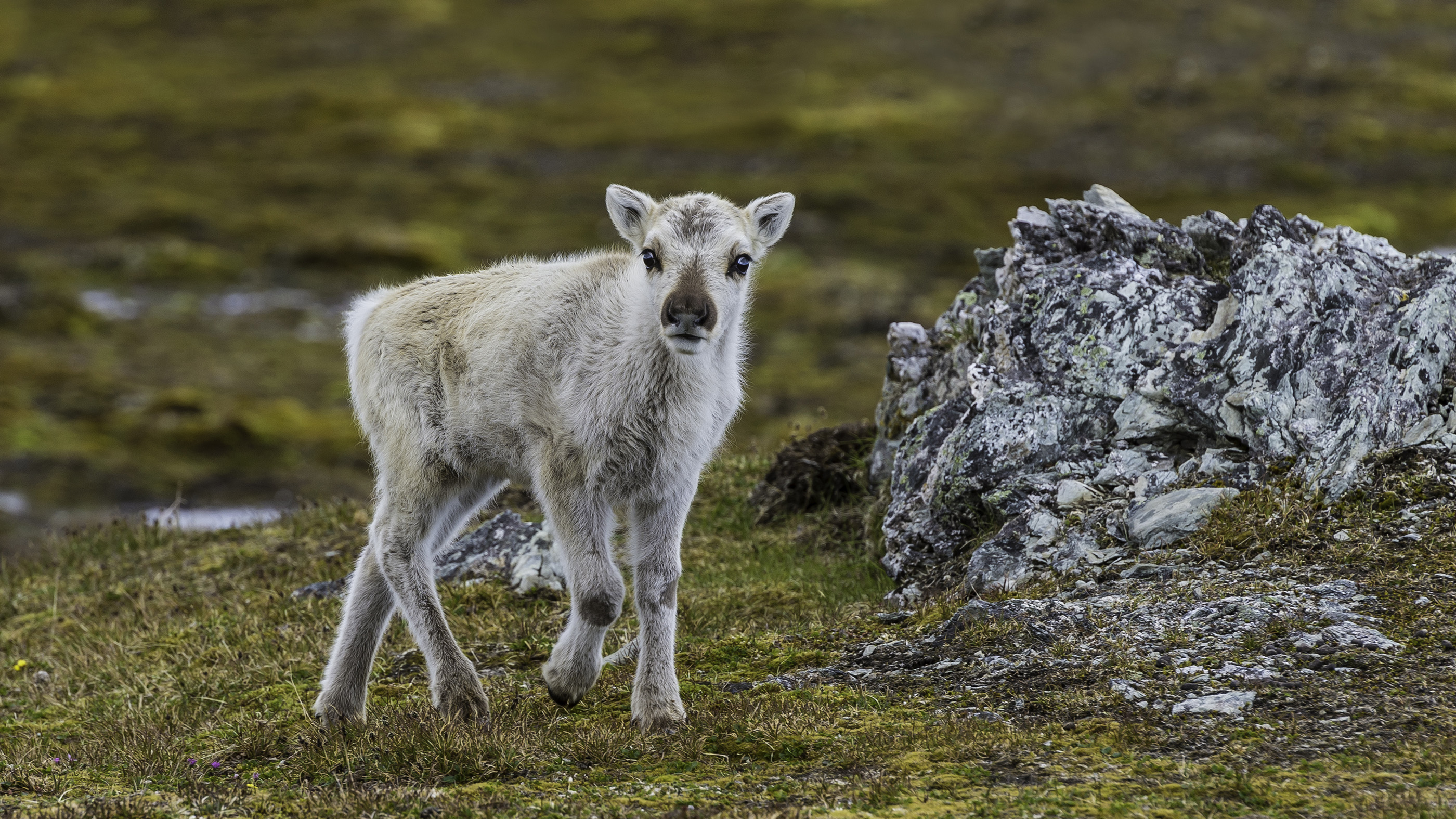Reindeer and Caribou: Facts about majestic deer
Find out how reindeer were elevated to Yuletide status, where they live and how they migrate.

Reindeer and caribou are considered to be the same genus and species — Rangifer tarandus; they are part of the deer family called Cervidae, which includes deer, elk, moose and wapiti. Like others in their family, reindeers have long legs, hooves and antlers.
In Europe, these animals are all called reindeer, and in North America, "reindeer" refers to the domesticated version and "caribou" is typically reserved for the wild populations, according to the San Diego Zoo. How did these antlered beasts, which are found in cold, snowy habitats, become Santa’s sleigh-pullers? Turns out, in 1823, Clement Clark Moore’s poem "A Visit from St. Nicholas" lofted reindeer to their Yuletide status, according to BBC Earth. Some scientists think that the reindeer was one of the first domesticated animals. It was first domesticated around 2,000 years ago, according to the Smithsonian. Many Arctic societies still rely on this animal for food, clothing and materials for shelter.
How big are reindeer?
Male reindeer grow to 28 to 53 inches (70 to 135 centimeters) tall from hooves to shoulder, and around 5.9 to 6.8 f (1.8 to 2.1 m) long. Females are typically smaller, around 5.5 to 6.2 feet (1.7 to 1.9 m) long. Males weigh 143 to 529 pounds (65 to 240 kilograms), and females weigh 121 to 308 pounds (55 to 140 kg).
These animals are the only deer species in which both males and females grow antlers, according to the University of Alaska Fairbanks. Each antler grows from a stub called a pedicle on the skull’s frontal bone. These bony antlers are covered by a furry skin, called velvet, which is equipped with blood vessels that provide oxygen to the growing bone.
Size: Up to 5.9 to 6.8 feet (1.8 to 2.1 m) long
Life span: Up to 15 or so years old
Conservation status: Vulnerable
A male's antlers can grow up to 51 inches (130 centimeters) long and weigh up to 33 pounds (15 kg), making them significantly bigger and heavier than a female’s antlers, which can grow up to 20 inches (50 cm), according to the San Diego Zoo. Adult males drop their antlers in November, while adult females keep their antlers until April or May, according to the Carnegie Museum of Natural History. (This fact suggests that all of Santa’s sleigh-pullers, including the famous Rudolph, are most likely females. Technically, they could also be young males, which keep their small racks through February of the following year.)
Do reindeer have red noses?
Speaking of the leader of Santa's pack, the secret to Rudolph's rosy schnozzle is a dense network of blood vessels in his nose, Live Science previously reported. Reindeer, it seems, have 25% more capillaries carrying red, oxygen-rich blood in their nasal architecture than humans do, said medical researchers in the Netherlands and the University of Rochester in New York.
"In colder climates … the increase in blood flow in the nose will help keep the [nose's] surface warm," John Cullen of the University of Rochester said. The dense network of blood vessels in reindeer noses is also essential for regulating the animal's internal body temperature — like many mammals, reindeer don't sweat.
Where do reindeer live?
Reindeer are found in a large circumpolar region surrounding the North Pole, in Alaska, Canada, Greenland, northern Europe and northern Asia in tundra, mountains and woodland habitats. Their home ranges can be as big as 190 square miles (500 square km), according to Encyclopedia Britannica. Subspecies of caribou, such as the woodland caribou (Rangifer tarandus caribou), can be found as far south as 46 degrees north latitude (northern U.S.); the Peary caribou subspecies and Svalbard reindeer (Rangifer tarandus platyrhynchus) subspecies can both exist as far north as 80 degrees north latitude, which crosses through Greenland, Svalbard and other northerly regions, according to the Animal Diversity Web, run by the University of Michigan’s Museum of Zoology.
Reindeer herds

Kingdom: Animalia
Phylum: Chordata
Class: Mammalia
Order: Artiodactyla
Family: Cervidae
Genus and species: Rangifer tarandus
(There are 14 subspecies of reindeer.)
Source: ITIS
Reindeer are very social creatures. They feed, travel and rest in groups called herds. These herds can include from 10 animals to a few hundred, according to the San Diego Zoo. In the spring, herds can get even bigger — from 50,000 to 500,000 members. The herds often travel south around 1,000 miles (1,600 km) to 3,000 m (5,000 km) to find food in the winter.
One of the biggest and most studied herds lives on the Taimyr Peninsula, in the northernmost part of Russia. Monitoring showed that the Taimyr herd reached a peak of 1 million individuals in 2000, which took a plunge to 600,000 by 2016, BBC News reported. Climate change could be part of the problem. Every year in the spring and fall, this herd migrates from calving ranges on the peninsula to their winter haven in boreal forests; however, climate change has changed the timing of this trek, meaning young calves are still too small to make the journey, the World Wildlife Fund said.
What do reindeer eat?
Reindeer are herbivores, which means they only eat vegetation. Their diet can include herbs, ferns, mosses, grasses, shoots, fungi and leaves. On average, an adult reindeer eats around 9 to 18 pounds (4 to 8 kg) of vegetation a day, according to the San Diego Zoo.
In the winter, reindeer must dig through the snow to find food. They dig using their antlers and munch on energy-packed lichens called reindeer moss.
Reindeer reproduction

Breeding season lasts from August through September, and gestation for the female lasts for about 7.5 months, according to the University of Alaska Fairbanks. Female reindeer typically give birth to only one youth at a time, though they have been found to have up to four young at a time. At birth, a baby reindeer, called a calf, weighs between 13 and 17.5 pounds (6 and 8 kg), the university said.
Calves are able to stand after their first hour of life and within a week they start eating solid food in addition to their mother's milk. They are weaned completely within six months and start growing their first set of antlers around their second birthday. By the time they reach their 1-year birthday, these calves weigh a whopping 145 to 165 pounds (65 to 75 kg). Reindeers become mature at 4 to 6 years old and live 15 to 18 years. Females tend to live for longer than males, with some reaching 15, whereas males are much more susceptible to predation after the mating season and have an average life expectancy in the wild of 4.5 years, according to the University of Michigan's BioKids page.
Conservation status
Reindeer are listed as vulnerable by the International Union for Conservation of Nature (IUCN). The IUCN's Red List of Threatened Species says the species has this distinction because it experienced a 40% decline in population over the past 21 to 27 years. There are currently around 3.5 million caribou in North America, around 1 million wild reindeer in Eurasia and around 3 million domestic reindeer in northern Europe, according to Encyclopedia Britannica.
Additional resources
- The University of Texas at Austin describes the Sami culture and their history of reindeer herding.
- Learn more about reindeer and caribou, risks to their survival and conservation efforts at this WWF webpage.
- For early readers, these two books could be fun ways to teach them about reindeer: "Reindeer (A Day in the Life)" and "Reindeer (Elementary Explorers)."
Sign up for the Live Science daily newsletter now
Get the world’s most fascinating discoveries delivered straight to your inbox.
Jeanna Bryner is managing editor of Scientific American. Previously she was editor in chief of Live Science and, prior to that, an editor at Scholastic's Science World magazine. Bryner has an English degree from Salisbury University, a master's degree in biogeochemistry and environmental sciences from the University of Maryland and a graduate science journalism degree from New York University. She has worked as a biologist in Florida, where she monitored wetlands and did field surveys for endangered species, including the gorgeous Florida Scrub Jay. She also received an ocean sciences journalism fellowship from the Woods Hole Oceanographic Institution. She is a firm believer that science is for everyone and that just about everything can be viewed through the lens of science.










